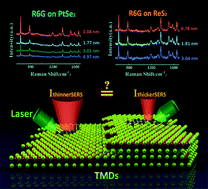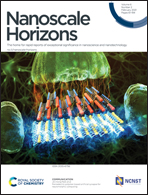Origin of layer-dependent SERS tunability in 2D transition metal dichalcogenides†
Abstract
Two-dimensional (2D) semiconductors are expected to replace noble metals to become the matrix materials of the next generation of commercial surface-enhanced Raman scattering (SERS) chips. Herein, we systematically studied the influence of the interlayer interaction on the SERS activity of 2D semiconductors from a brand-new perspective and comprehensively analyzed the physicochemical process of 2D semiconductor interlayer modulated SERS. Taking transition metal dichalcogenides as examples, we chose PtSe2 with strong interlayer interactions and ReS2 with weak interlayer interactions to analyze the physicochemical process of 2D semiconductor interlayer modulated SERS by first-principles calculations. PtSe2 and ReS2 samples with various thicknesses were prepared respectively, and the results of comparative experiments proved that the layer-dependent SERS tunability of 2D semiconductors is directly related to the interlayer interaction. This work provided a novel method for further improving the SERS detection limit of 2D semiconductors and a possible strategy for the industrial upgrading of commercial SERS chips.

- This article is part of the themed collections: Nanoscale and Nanoscale Horizons: Surface Enhanced Raman Spectroscopy, Nanoscale Horizons 2022 Lunar New Year Collection and Nanoscale Horizons Most Popular 2021 Articles


 Please wait while we load your content...
Please wait while we load your content...